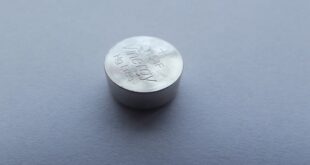- Interim pre-tax profit falls 54 per cent to £4.3mn on flat revenue of £63.1mn
- Lower production in PGM and copper operations due to power and water supply issues
- Copper production guidance cut due to delayed ramp-up of Roan Concentrator
Below par interim results from Jubilee Metals (JLP: 7.4p), an Aim-traded mining company that makes money by extracting platinum group metals (PGMs) and copper from mine tailings in South Africa and Zambia, were flagged up in last month’s operational update (‘Power shortages take the shine off Jubilee Metals’, 15 February 2023).
Jubilee’s PGM output came entirely from the group’s expanded Inyoni processing facility, which lifted own production by 20 per cent to 18,208 PGM ounces (oz) and captured 100 per cent of revenue. However, total PGM production declined 10 per cent due to the absence of lower-margin third-party processing. The combination of lower production, softer metal prices and 13 per cent higher net cost per PGM ounce (after chrome by-product credits) meant that attributable PGM earnings fell 19 per cent to £10.6mn on 8 per cent lower PGM revenue of £22.5mn. The high-margin activity accounts for three-quarters of group earnings, and the result explains around half the shortfall in profits in the period.
It’s still a highly profitable activity and management maintained full-year guidance at 38,000 PGM ounces (excluding third-party processing ), having lowered it from 44,000 oz last month due to the impact of power shortages and lag in adding back-up power capacity. Importantly, Jubilee is progressing with its expansion plans, including a PGM plant upgrade in the eastern limb of the Bushveld to add a further 25,000 PGM ounces of capacity. Construction will start in the final quarter of 2023 and take six months to complete at a cost of $5.5mn. Also, despite the power disruptions, the directors expect to beat chrome production guidance of 1.2mn tonnes, although this is a low-margin activity that earned £2.5mn of attributable earnings from £35.5mn of revenue in the first half.
There have been challenges in Zambia, too, as both water and power issues led management to reduce copper production guidance from 10,000 to 3,000 tonnes, having delivered only 1,149 tonnes in the first half. On a positive note, operations there are now running back at 80 per cent of the 12,000-tonne production capacity after interventions and infrastructure upgrades, and should ramp up to full capacity in May. Copper prices are 13.6 per cent higher in the second half than in the reporting period, too.
WH Ireland has yet to reinstate its forecasts, but it’s not unrealistic to expect a decent rebound in earnings in the 2023-24 financial year driven by higher production levels. So, with the £200mn market capitalisation group priced at book value parity, the bombed-out shares rate a hold.
Source link


